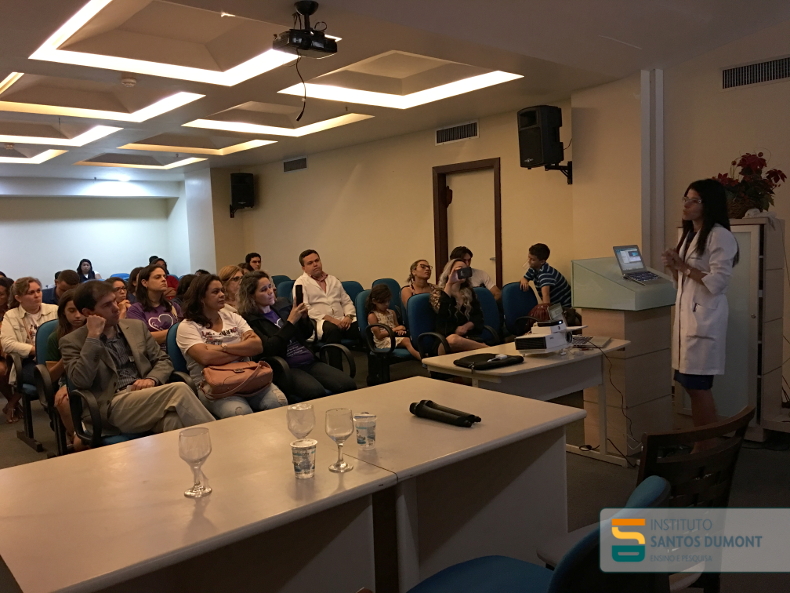09/09/2016
Text and photos: Ariane Mondo – Ascom ISD | Top image: Camila Simão – CEPS/ISD
Epilepsy: continuous treatment is fundamental to the quality of life of patients

September 9th is marked as National and Latin American Epilepsy Day. Therefore, we provide some information that was transmitted in a lecture organized at the beginning of August, in Natal (RN), by Association of Children with Myelomeningocele, Hydrocephalus and Cerebral Palsy, known as Neurinho (RN), with the support of Santos Dumont Institute (ISD). In this ocasion, Hougelle Simplicio, neurosurgeon at the Santos Dumont Institute, Isadora Queiroz, neurologist and Angelo Raimundo Neto, neurosurgeon, spoke about some clinical data on the disease and answered questions from members and guests.
According to information from the World Health Organization (WHO), around 65 million people worldwide and 3 million in Brazil have epilepsy. It is a brain disease that causes seizures, but when diagnosed it can be treated. Despite being one of the most common neurological disorders, especially in childhood, 60% of people with epilepsy in the world do not have access to treatment and of those who start therapeutic monitoring, 75% is controlled with medication.
It is known that repeated attacks can lead to cognitive and motor delays and even sudden death and treatment is recommended to improve patients' quality of life. Information and adequate medical monitoring are allies to help those with epilepsy lead a normal life. In the lecture held in Natal, in addition to the data presented, some very common doubts were clarified:
– During a crisis, you should not try to hold the tongue or place objects in the patient’s mouth;
– Try to keep the patient away from any object that could hurt them at the time of convulsions. It is recommended that you place something soft under your head to serve as protection;
– If possible, try to lay the patient on their side with their head higher to facilitate breathing and avoid aspiration of any contents into the lungs;
– You must wait for the crisis to end spontaneously and after that, you must let the patient rest so that they can recover.
ISD and Neurinho Partnership

Neurinho associates hold monthly meetings with professionals from different areas, who can answer questions on various topics. ISD has acted as a partner of the Association since the beginning of 2016 and in addition to lectures and chats with professionals, the Institute also offers physiotherapeutic assistance for children with neurogenic bladder, multidisciplinary assistance for pregnant women diagnosed with fetal malformation and clinical pediatric assistance for Neurinho children. These services are offered by the multidisciplinary team of the Anita Garibaldi Health Education and Research Center (CEPS), ISD unit located in Macaíba (RN).
In addition, there are biannual meetings between associates and researchers from the Edmond and Lily Safra International Institute of Neuroscience (IIN-ELS), with the aim of bringing scientific research closer to members and bringing them to the reality of neuroengineering research from the perspective of rehabilitation.
ISD's support for the Neurinho Association is part of one of the projects of the Institutional Education Program for Social and Community Action, under the responsibility of CEPS.














